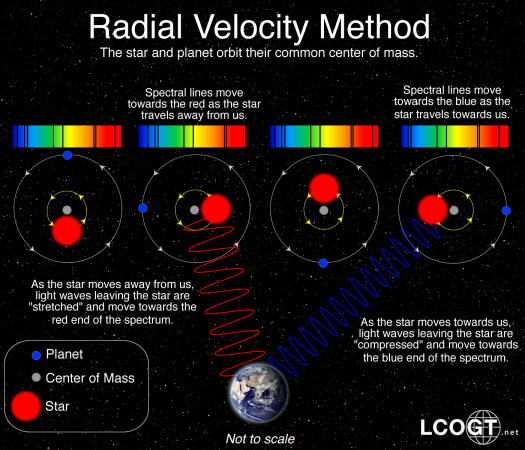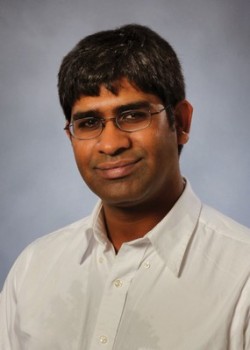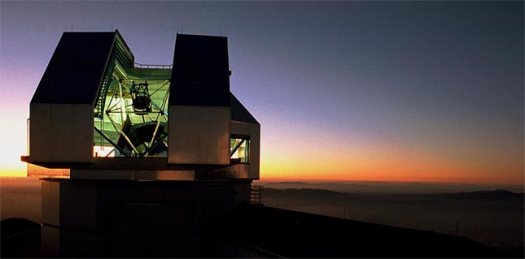
When the first exoplanet was identified via the radial velocity method, the Swiss team was able to detect a wobble in the star 51 Pegasi at a rate of 50 meters per second. The wobble is the star’s movement back and forth caused by the gravitational pull of the planet, and in that first case it was dramatic — the effects of a giant Jupiter-sized planet orbiting extremely close to the star.
Many of the early exoplanet discoveries were of similarly large planets close to their host stars, but it wasn’t because there are so many of them in the cosmos. Rather, it was a function of the capabilities of the spectrographs and other instruments used to view the star. They were pioneering breakthroughs, but they didn’t have the precision needed to measure wobbles other than the large, dramatic ones caused by a close-in, huge planet.
That was the mid 1990s, and radial velocity astronomers have worked tirelessly since to “beat down” that 50 meters per second number. And twenty years later, radial velocity astronomers using far more precise instruments and more refined techniques have succeeded substantially: 1 meter per second of wobble is now achieved for the quietest stars. That has vastly improved their ability to find smaller exoplanets further from their stars and is a major achievement. But it has nonetheless been a major frustration for astronomers because to detect terrestrial exoplanets in the Earth-sized range, they have to get much more precise — in the range of tens of centimeters per second.
A number of efforts to build systems that can get that low are underway, most notably the ESPRESSO spectrograph scheduled to begin work on the High Accuracy Radial Vlocity Planet Searcher (HARPS) in Chile next year. Then earlier this month an ambitious NASA-National Science Foundation project was awarded to Penn State University to join the race. The next-generation spectrograph is scheduled to be finished in 2019 and installed at the Kitt Peak National Observatory in Arizona, and its stated goal is to reach the 20 to 30 centimeters per second range.
Suvrath Mahadevan, an assistant professor at Penn State, is principal investigator for the project. It is called NEID, which means ‘to see’ in the language of the Tohono O’odham, on whose land the Kitt Peak observatory is located.
“For many reasons, the (radial velocity) community has been desperate for an instrument that would allow for detections of smaller planets, and ones in habitable zones,” he said. “We’re confident that the instrument we’re building will — in time — provide that capability.”

Project scientist Jason Wright, associate professor of astronomy and astrophysics at Penn State, put it this way: “NEID will be more stable than any existing spectrograph, allowing astronomers around the world to make the precise measurements of the motions of nearby, Sun-like stars.” He said his Penn State team will use the instrument “to discover and measure the orbits of rocky planets at the right distances from their stars to host liquid water on their surfaces.”
NASA and the NSF wanted the new spectrograph built on an aggressive timetable to meet major coming opportunities and needs, Mahadevan said.
The speedy three-year finish date is a function of the role that radial velocity detection plays in exoplanet research. While many planets have been, and will be, first detected through the technique, it is also essential in the confirming of candidate planets identified by NASA space telescopes such as Kepler, the soon-to-be launched TESS (the Transiting Exoplanet Survey Satellite) and others into the future. There is a huge backlog of planets to be confirmed, and many more expected in the relatively near future.
What’s more, as Mahadevan explained, an instrument like NEID could significantly help NASA’s planning for a possible 2030s Flagship space telescope mission focused on exoplanets. Two of the four NASA contenders under study are in that category — LUVOIR (Large Ultraviolet Visible Infrared) Surveyor and Hab-Ex — and their capabilities, technologies, timetables and cost are all now under consideration.
If NEID can identify some clearly Earth-sized planets in habitable zones, he said, then the planning for LUVOIR or Hab-Ex could be more focused (and the proposal potentially less costly.) This is because the observatory could be designed to look at a limited number of exoplanets and their host stars, rather than scanning the skies for a clearly Earth-like planet.
“Right now we have no definite Earth-sized planets in a habitable zone, so a LUVOIR or Hab_ex design would have to include a blind search. But if we know of maybe 15 planets we’re pretty sure are in their habitable zones, the targets get more limited and the project becomes a lot cheaper.”

These possibilities, however, are for the future. Now, Mahadevan said, the Penn State team has to build a re-considered spectrograph, a significant advance on what has come before. With its track record of approaching their work through interdisciplinary collaboration, the Penn State team will be joined by collaborators from NASA Goddard Space Flight Center, University of Colorado, National Institute of Standards and Technology, Macquarie University in Australia, Australian Astronomical Observatory, and Physical Research Laboratory in India. Much of the work will be done over the next three years at Penn State, but some at the partner institutions as well.
Key to their assembly approach is that the instrument will be put together in vacuum-sealed environment and will have no vibrating or moving parts. This design stability will prevent, or minimize, instrument-based misreadings of the very distant starlight being analyzed.
A major issue confronting radial velocity astronomers is that light from stars can fluctuate for many reasons other than a nearby planet — from sunspots, storms, and other magnetic phenomena. The NEID instrument will try to minimize these stellar disruptors by providing the broadest wavelength coverage so far in an exoplanet spectrograph, Mahadevan said, collecting light from well into the blue range of the spectrum to almost the end of the red.
“We’re not really building a spectorograph but a radial velocity system, he said. That includes upgrades to the telescope port, the data pipeline and more.
This is how Lori Allen, Associate Director for Kitt Peak, described that new “system”: “The extreme precision (of NEID) results from numerous design factors including the extreme stability of the spectrometer environment, image stabilization at the telescope, innovative fiber optic design, as well as state-of-the-art calibration and data reduction techniques”.

Sixteen teams ultimately competed to build the spectrograph, and the final two contenders were Penn State and MIT. Mahadevan said that, in addition to its spectrograph design, he believed several factors helped the Penn State proposal prevail.
His team has worked for several years on another advanced spectrograph for the Hobby-Eberly Telescope in Texas, one that required complex vacuum-sealed and very cold temperature construction. Although the challenges slowed the design, the team ultimately succeeded in demonstrating the environmental stability in the lab. So Penn State had a track record.
What’s more, the school and its Center for Exoplanets and Habitable Worlds have a history of working in an interdisciplinary manner, and have been part of several NASA Astrobiology Institute projects. (The instrument has a blog of its own: NEID.)
The Kitt Peak observatory, which saw first light in 1994, has been the sight of many discoveries, but in recent years has faced cutbacks in NSF funding. There was some discussion of reducing its use, and the NASA-NSF decision t0 upgrade the spectrograph was in part an effort to make it highly relevant again. And given the scientific need to confirm so many planets — a need that will grow substantially after TESS launches in 2017 or 2018 and begins sending back information on thousands of additional transiting exoplanets — enhancing the capabilities of the Kitt Peak 3.5 meter telescope made sense.
Kitt Peak is unusual in being open to all comers with a great proposal, whether they’re from the U.S. or abroad. The Penn State team and partners will get a certain number of dedicated night to observe, but many others will be allocated through competitive reviews. And so when NEID is completed, astronomers from around will have a shot at using this state-of-the-art planet finder.
